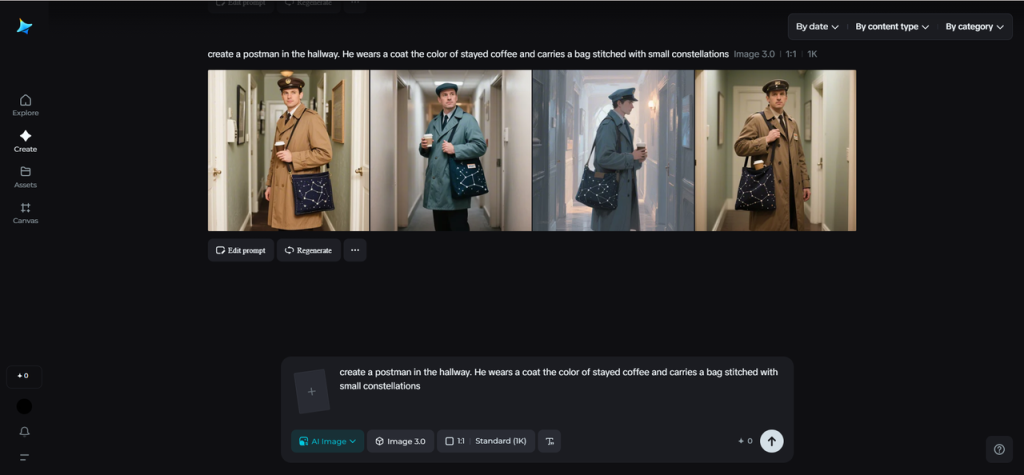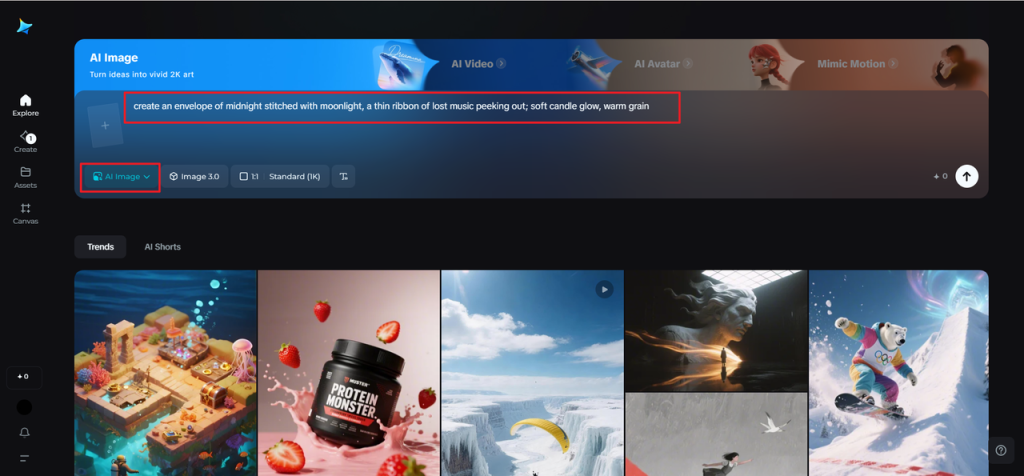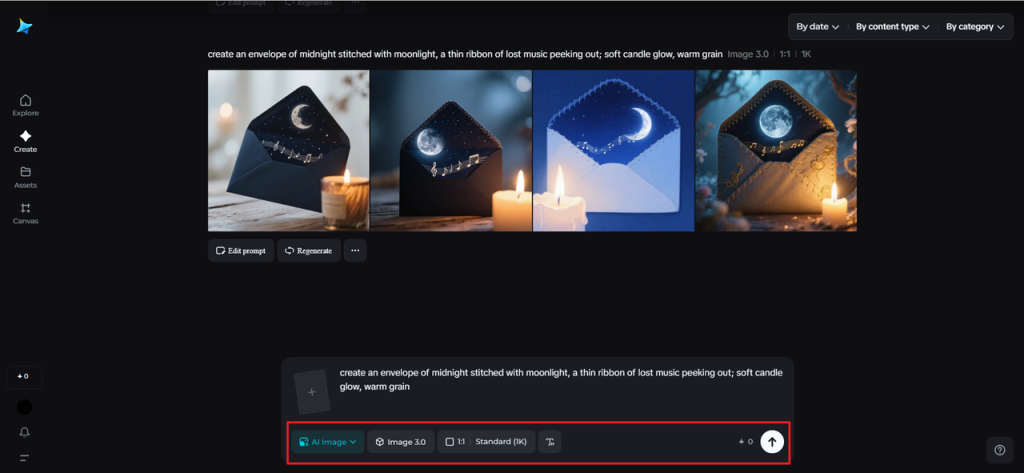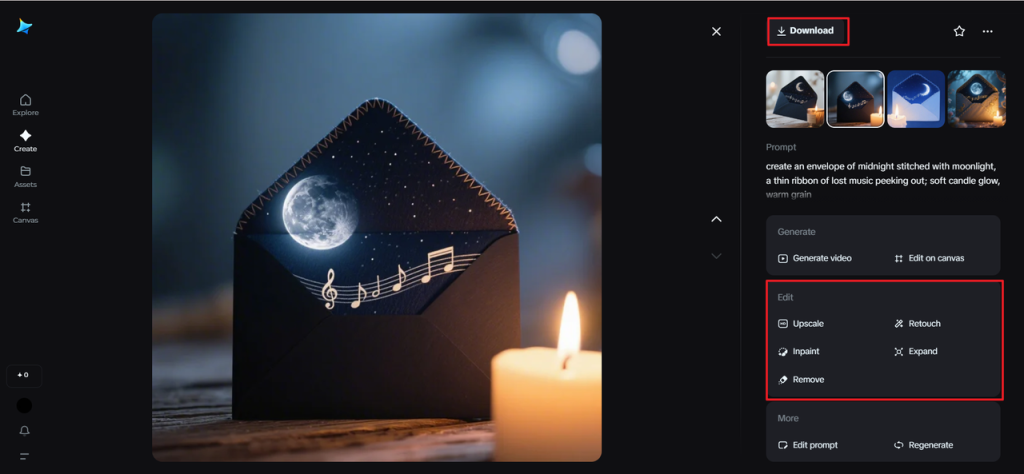There’s a rumor in sleepy towns that crossing the thin hour between dawn and wakefulness is like walking down a hallway of mailboxes: some doors open to memory, some to mystery, and some slam shut so quickly you never knew anything passed through.
In my city, that hallway has a postman. He wears a coat the color of stayed coffee and carries a bag stitched with small constellations. If you want a visual to hold while you read — the sort of image that suggests dusk, a dim lamp, a hand reaching for a folded dream — feed a line into Dreamina’s AI photo generator and let it make a mood plate: a torn page of sleep, a ribbon of moonlight, a stamped envelope of fog. It helps to see the object before you believe in the route. Let’s get right into it!
The types of deliveries (you’ll want to recognize these)
- The echo: a memory that sounds like a line you almost said aloud; it fits into conversation if you let it.
- The blueprint: a sequence that maps a problem; useful for builders, cooks, or anyone fixing a leak in the logic of a life.
- The haunt: a small, stubborn replay of a sorrow that wants attention rather than avoidance.
- The flicker: a brief, eccentric suggestion — a color idea for a painting, the first two bars of a melody.
These are the frequent items. Rarer are the parcels wrapped in weather: a storm of regret, a sudden orchard of love, a brief war of teeth and ice. The postman treats them differently. He never delivers a storm alone.
The post office and its seal
There’s a building where the postman sorts: low-ceilinged rooms, shelves of brass and feathers, a counter lined with tiny pigeonholes containing the city’s small losses. Above the counter, against a background of patched wallpaper, hangs a seal — not a corporate emblem but rather a sigil: a hand holding a sleeping eye. The symbol is simple and useful, a mark of trust.
If you ever want a tiny emblem for a project — a stamp, a zine header, a card that says “This is remembered here” — a compact mark helps the idea feel official without being bureaucratic. The postman borrows such marks from craftspeople and printers; they are handy for making a small practice look public and kind.
Midnight routes and unlikely addresses
The postman’s routes change with the moon. Sometimes he walks the rooftops, delivering to chimneys where old arguments sleep; sometimes he dives into the subway where lost languages echo, tucking dream-slips into the folds of commuters’ scarves. He knows to avoid certain zones at certain times: the edge of the harbor after market day, where grief grows like salt; the courthouse steps at noon, where people accidentally misplace their sense of fairness.
Unlikely addresses yield rich returns. A dream left at the florist’s ledger might transmute into a brave bouquet; a dream tucked behind a café’s sugar jar often sprouts a sentence for a writer who had long thought her language exhausted. The postman favors these conversions: he believes dreams become most useful when they’re borrowed and refitted.
Creating letters for the otherworldly characters using Dreamina
Step 1: Craft a text prompt
Go to Dreamina and compose a brief, suggestive prompt to construct a dream-plate: for example, “an envelope of midnight stitched with moonlight, a thin ribbon of lost music peeking out; soft candle glow, warm grain.” This provides you with a visual reference point for the narrative you wish to record.
Step 2: Adjust parameters and go
Select a model that prefers mood and texture, place your aspect ratio suitable for print or social, choose between 1k for speedy concepts or 2k for intricacy, and click the icon of Dreamina to create variations. Select a version that seems like the dream you recall the most.
Step 3: Edit and download
Use Dreamina’s inpaint to smooth an edge, extend to encompass a hand or doorway, eliminate any distracting factor, and touch up color so the plate feels like memory. Click the Download icon to download the artifact to save in your letterbox or zine.
Shadow conversations with patrons
Sometimes recipients leave notes for the postman. They tuck them into jars at the sorting room window or nail them to the oak door. The notes say things like
- “Please stop leaving me the same childhood song, it is too loud at three a.m.”
- “Thank you for the map of the kitchen — we fixed the sink.”
The postman replies in small ways: rearranges routes, seals a dream with extra cotton, or asks another courier to accompany a heavy parcel.
He also takes requests. If you wake and sense a missing rhythm — a recipe step, a melody lift, the memory of a face — you can write to the sorting room. The request form is intentionally messy, a way to discourage shopping carts of dream-consumption. It asks for intention: what will you do with the dream if it arrives? The room admires the honesty. They like people who plan to use what they’re given.
Read more 100+ Happy Birthday Shayari in Hindi: जन्मदिन की शुभकामनाएं
Making your own postage: small practices
You don’t have to wait for a postman to begin. There are small practices that cultivate a domestic postal life. Keep a “shelf of returns” — a shallow box where you place morning fragments you want to notice later. Label them with one line: “why I cried,” “the tune from the train,” “the phrase I almost said.” Once a week, open one and let it become a note, a sketch, a conversation topic. Treat forgetting like a resource: sometimes we need tidy ghosts to visit so we can be kinder to ourselves.
If you create a small practice that uses tiny emblems or cards, a neat mark helps make the ritual visible. For a simple series of stamps or badges use a local maker or a small compact mark from Dreamina’s AI logo generator to stitch the set into something you’ll look at again.
Artful ephemera and the marketplace of small things
The postman sometimes trades in ephemera. He commissions small dream-stamps, tiny prints that capture the texture of a remembered moment. If you want to craft such images for your own exchange, a free AI art generator can produce patterns and backgrounds that pair well with hand-finished dream-cards. The idea is simple: beauty helps a dream travel safely; craft gives forgetting a clean surface to rest on.
Shutting the postbag
The postman leaves a lot of things: the quick, the broken, the luminous. His work is not about returning people to their pasts but offering fragments that help make new mornings. He believes in care, in consent, and in the quiet architecture of small returns.
Dreamina helped me pin one image of him down — a small plate I carry like a stamp — and it has made my mornings more generous. If you wake today with a sliver of a night you cannot place, write a note, tuck it under your pillow, and perhaps the postman will leave a letter in the margin of your day.





